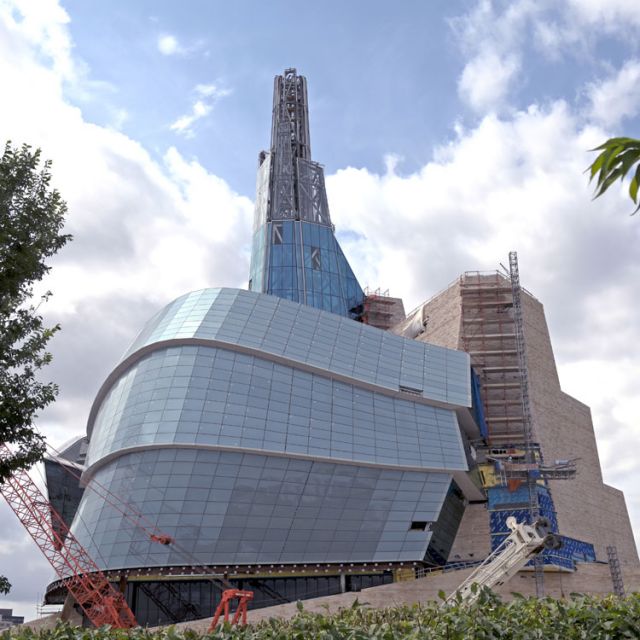When the museum opens next year in Winnipeg, it will downplay the wartime internment of Ukrainians in Canada and virtually ignore communist crimes committed during the Joseph Stalin era, said UCC executive director Taras Zalusky.
“When we saw how, first of all, the internment of Ukrainians (in Canada) during the First World War was not going to have an exhibit, it was only going to be represented by a photo, we were kind of upset,” said Zalusky, who toured the museum in February.
Zalusky also expressed dismay about the museum’s treatment of the Holodomor, a famine created by Stalin policies that led to millions of deaths in the Ukraine in 1932 and ’33. He called Stalin’s actions “intentional famine, genocide.”
“There’s no gallery, there’s only a single panel near the washrooms,” he said, adding the museum is guilty of “a horrendous oversight” by being “entirely silent” on the communist crimes.
Zalusky said the UCC wants a permanent and prominent representation of the Holodomor in its own gallery and a permanent exhibit on Canada’s first national internment camps.
Maureen Fitzhenry, media relations manager of the museum, calls the disagreement a misunderstanding of how the museum is to be organized. She said it is an “idea museum,” not an artifact and collection museum.
“We’re looking at human rights through themes,” she said. “We’re not saying, here’s the Ukrainian thing, here’s the Rwandan thing… it’s not like a collection of grievances. Instead we’re trying to raise the importance of human rights for everyone, and we’re using different examples, so the Ukrainian Canadian stuff is scattered throughout three different galleries.”
She said the Holodomor and wartime internment are integrated in multiple ways into different exhibits and will be presented permanently and prominently. She also said the museum is honouring all its commitments to the Canadian Ukrainian community.
“The Asper Foundation promised that wartime internment would be dealt with prominently and respectfully. We’re doing that,” she said.
“In our Canadian human right’s journey, we’re exploring wartime internment in a number of ways, including that of Ukrainian Canadians. We’re using static images, interactive digital insight stations that are full of information and a mini- documentary film on a 96-foot screen. One of the mini-documentaries is devoted to wartime internment, beginning with Ukrainian Canadian internment.”
Fitzhenry said the Holodomor is acknowledged on “a recognition wall featuring atrocities, including the Holodomor,” and through an “interactive study table which will have primary source evidence about the Holodomor.” Additionally, first- hand video testimonies will be played at another spot in the museum.
She said that just because these types of exhibits are projected or use other modern technology, it does not mean they are any less permanent than traditional static exhibits, adding that no exhibit is near a washroom.
The “Ukrainian Canadian experience is extremely important to the Canadian experience and the lessons of human rights,” said Fitzhenry.
Zalusky disagrees that the museum is only an ideas museum and argues that the current display and projection plans fall short of what the Ukrainian community is seeking.
Zalusky says there are built exhibits called niches.
“If there can be one (a niche) on the Winnipeg General Strike, (if ) there can be one on the Japanese internment or the Chinese head tax, I don’t understand why they wouldn’t have Canada’s first national internment operations, the one that created a precedent of removing the rights of Canadians,” he said.
“We have supported the museum. We hope that it can be something that we can be proud of and not ashamed of when it opens its doors next year.”

